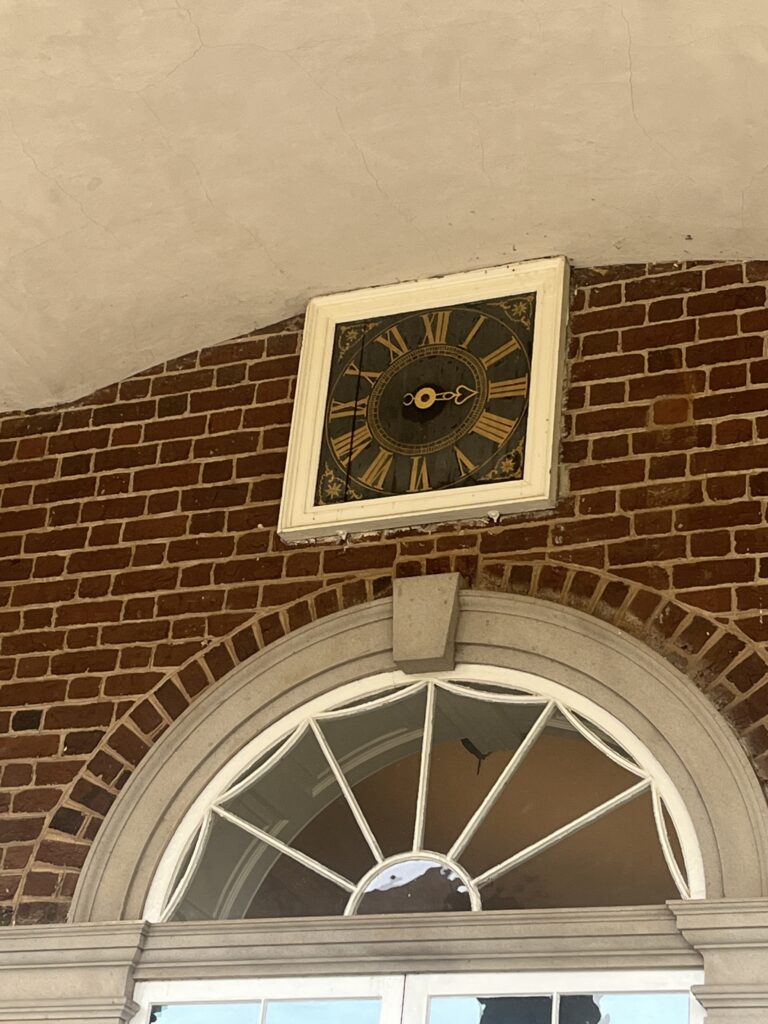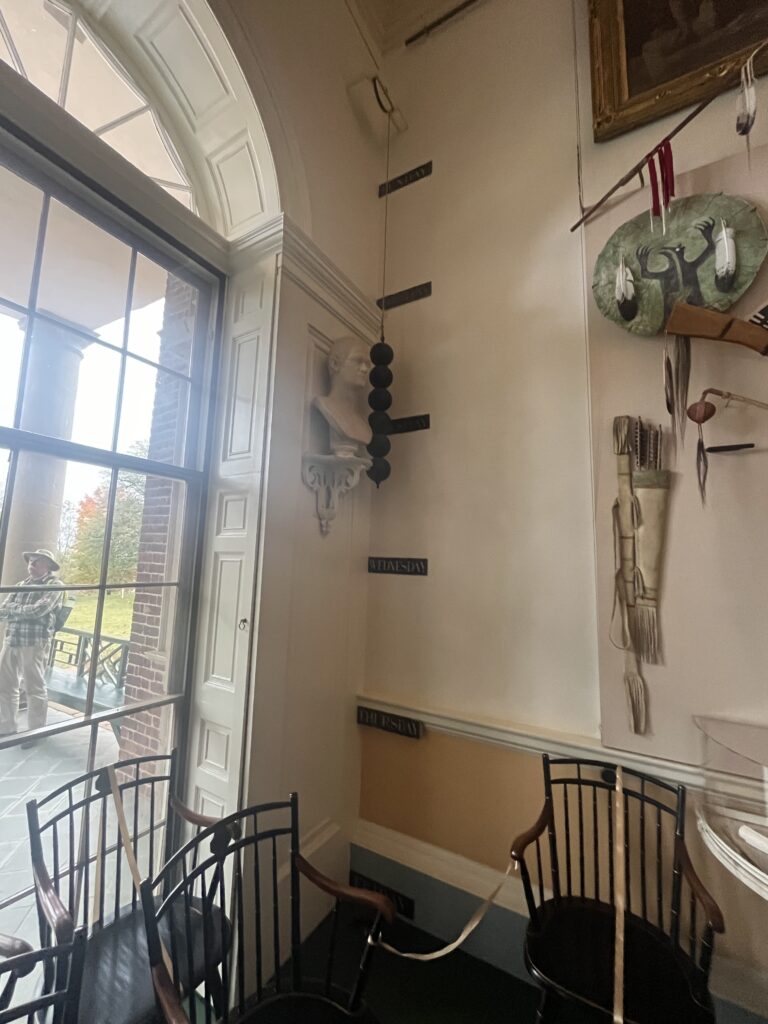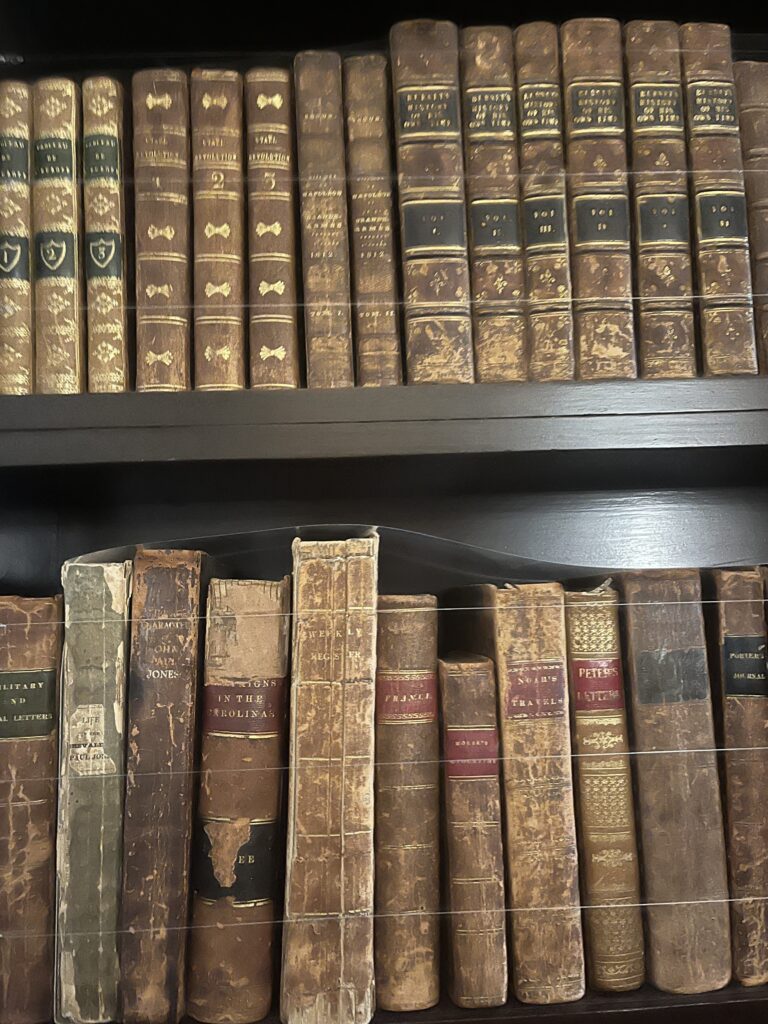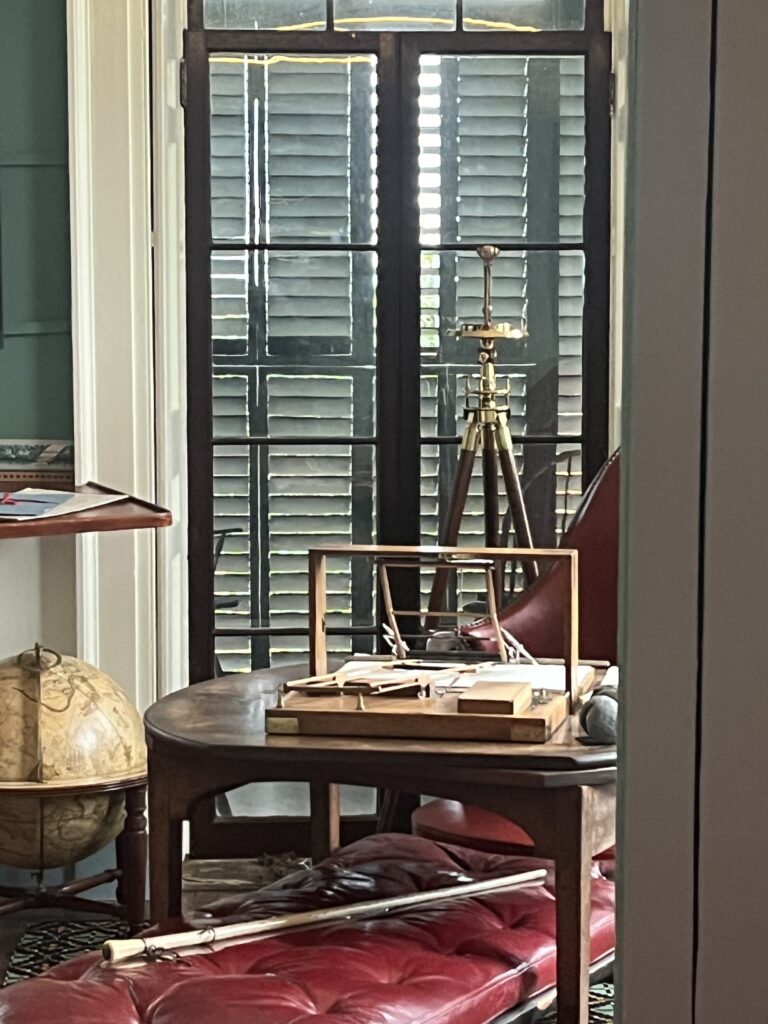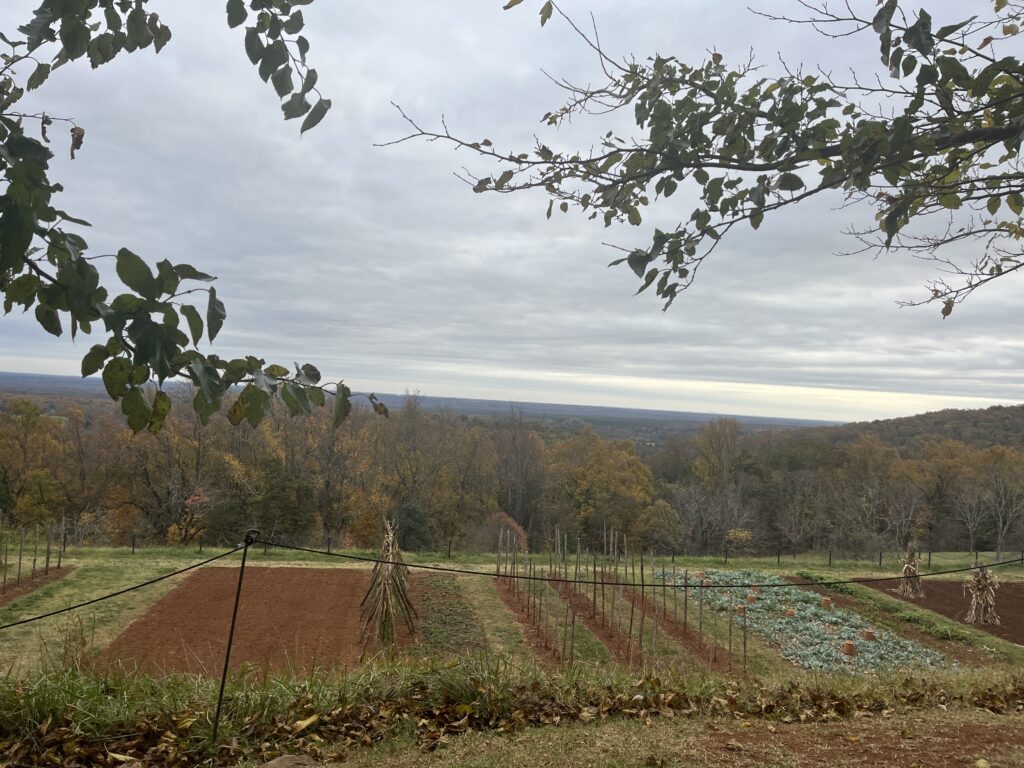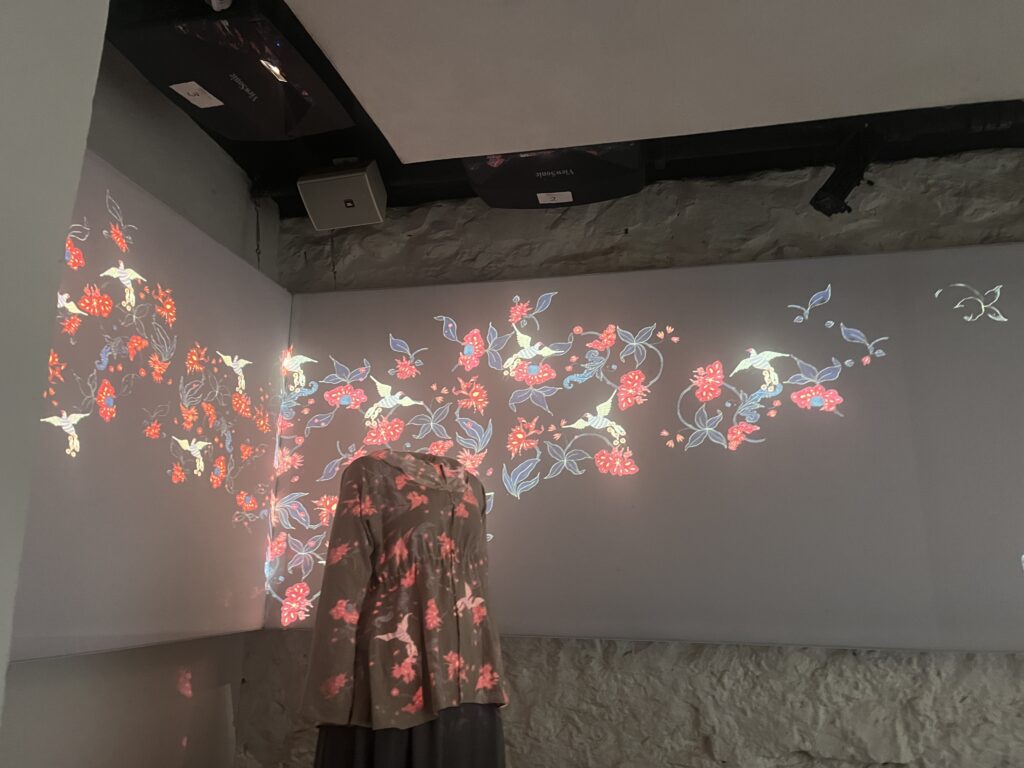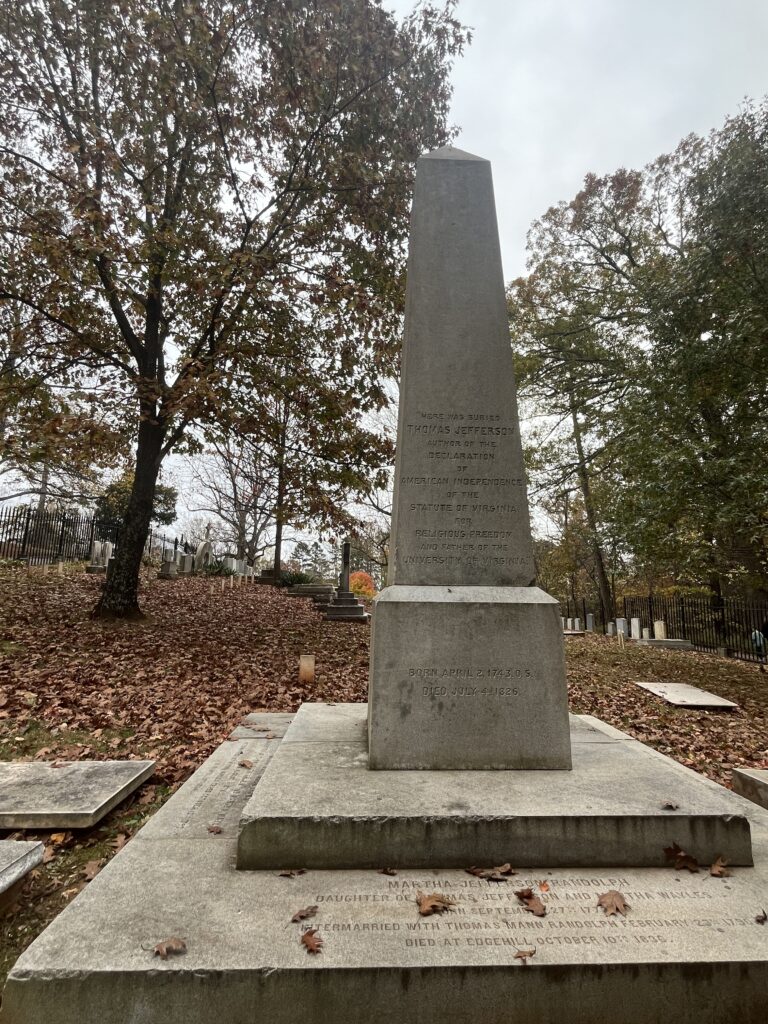Your cart is currently empty!
Monticello
“Knowledge is power
Knowledge is safety
Knowledge is happiness”
-Thomas Jefferson
There was a stark difference for Tim and me between Mt. Vernon and Monticello. Mt. Vernon was function over form….practical, simple, useful (with a bit of glam on the wharf front) but basically a nice house with great grounds and that beautiful Potomac view.
Monticello was built with parties and visitors in mind…Enamored by architecture, Jefferson designed Monticello with a nod to the glamorous Greek/Roman architecture and rooms just for displaying his vast collection of books, paintings, artifacts, scientific gadgets, bold paint colors and three sash windows. He was a shopper and loved cool things…I’m guessing Washington passed up the things he couldn’t afford. Kinda like Tim and me….I like shiny shit, and Tim likes things that work.
Our tour guide was superb and we spent 45 minutes wandering through the house. If you’ve been there or remember history, this part may bore you but we were enthralled!
Highlights:
The Hall: the entry hall where his guests waited. Filled with paintings, sculptures, and artifacts from natural history, this hall was amazing. The highlight for me was the wall clock he designed with faces both inside and outside the hall, run by weights that relied on gravity and aligned with the days of the week written on the inside walls as time elapsed. (see pic) Designed in 1792 and still working today. Clock is wound every Sunday and was used to run the daily workings of the estate.
His library: although still filled with books, part of his original collection was sold ($23,915 in 1815) to restock the Library of Congress after the British burned it. He bought books in seven different languages and learned Italian himself just so he could better design Monticello as he was creating this vision. There was also a print of his original design/platmap of University of Virginia with a library at the head of the quad rather than the more traditional church.
His office/bedroom: beautiful draperies on windows and bed, his desk with a “copier” that he bought in Paris which has two pens wired together and weighted such that as he wrote his documents a copy would be written simultaneously…(he went into the store for something else and found that as well! Never happened to me…..:)
His dining room: with a door size lazy Susan which the enslaved would fill with food from the kitchen (outside and below the house) and then could be turned by the servers and distributed on wheeled carts to accommodate guests throughout…Bright yellow paint! Fabulous….
The Hemings kitchen and cabin: with a well told history of his relationship with Sally Hemings and her brother James, their time in Paris, the children he fathered over many years and the freedom he promised them IF she returned to Monticello with him. She was never actually freed.
The gardens: once retired Jefferson created beautiful gardens throughout the estate which still delight but was an awful keeper of land. His spending outweighed his income and his farming acumen never supported his lifestyle.
He died in serious debt ($107,000 equivalent to almost $ 3M now) his children had to auction off most of his treasures and his enslaved workers and still couldn’t meet his debt. Monticello was eventually bought by a Jewish man named Uriah Levy and passed down to his nephew ( Jefferson Monroe…think they liked the founding fathers??) whose family cared for it and invested in it for more than 90 years given their gratitude for the life Jefferson had helped create in America for immigrants and those with diverse religious beliefs.
Although flawed in many ways, we loved his curiosity for learning, his commitment to knowledge (one of the first to argue for public education), the values he insisted on and embedded into the Declaration of Independence (written as a 30 something) and his apparent joie de vivre. I think Daveed Diggs nailed him in Hamilton….

